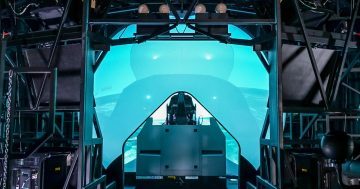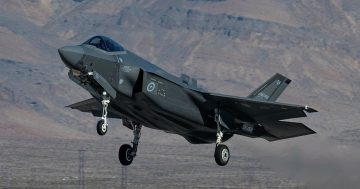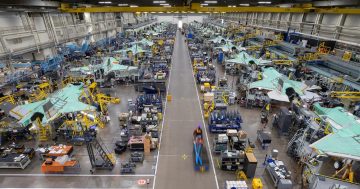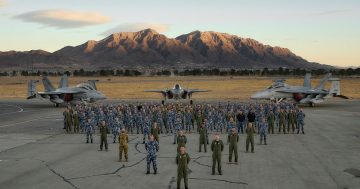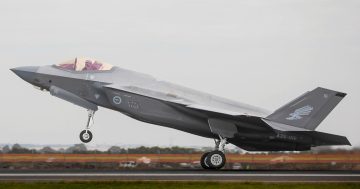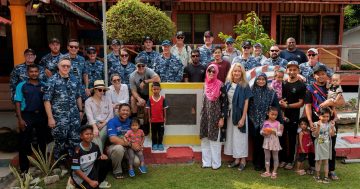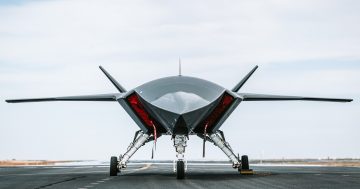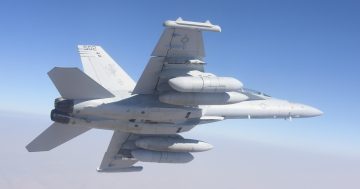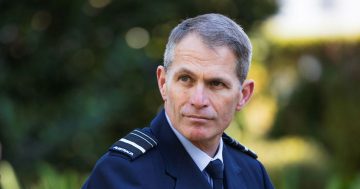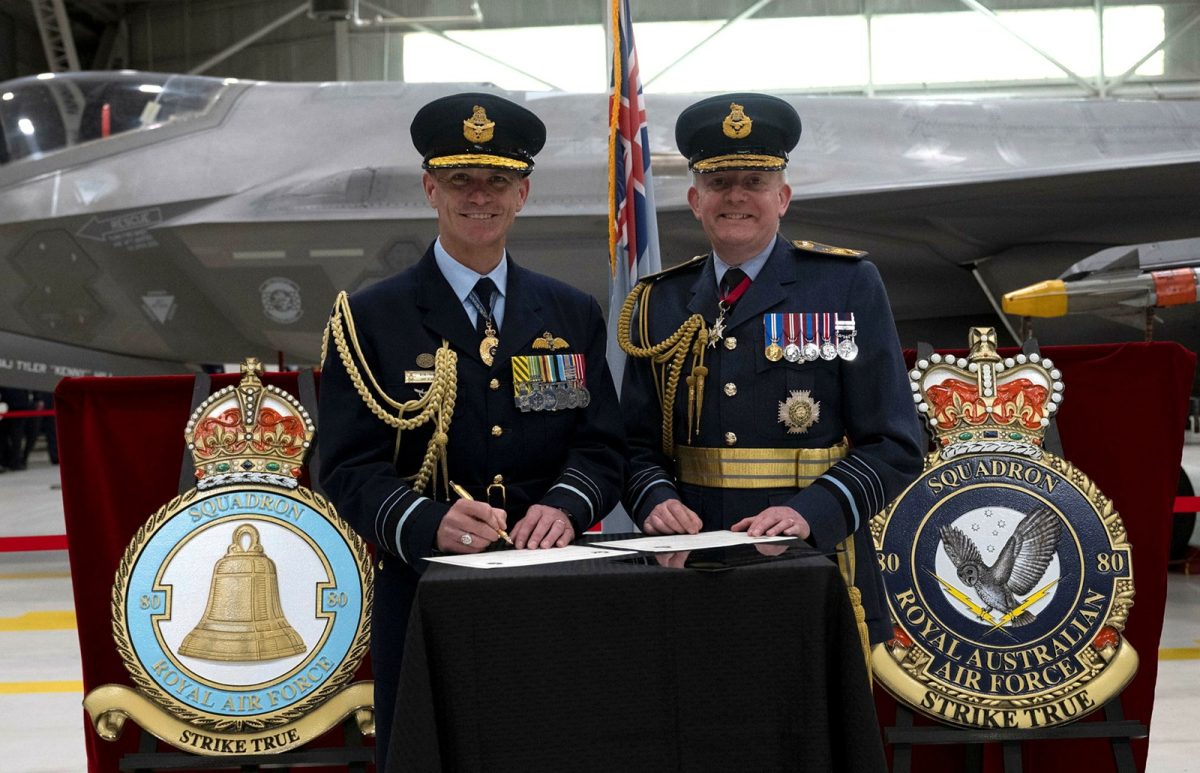
AIRMSHL Robert Chipman, RAAF (left) and ACM Sir Rich Knighton, RAF sign the reformation orders for both services’ No 80 Squadrons. Photo: ADF via USAF.
One of the key elements that separates the new Lockheed Martin F-35 Lightning combat aircraft from previous generations of aircraft is the amount of data the aircraft needs to successfully complete a mission.
On top of the need to replace older aircraft with the F-35, operators have not only had to learn new ways to perform maintenance and logistics, but they’ve had to develop new skillsets to prepare the data the aircraft requires.
There were eight original partner nations on the Joint Strike Fighter program from which the F-35 was derived, and there have been another 10 or so customers to take delivery of or order the aircraft.
But, as members of the Five-Eyes group of nations, Australia, Canada and the UK can access many advanced technologies and capabilities as the US uses that other nations cannot.
Because of this, these three nations established the Australia, Canada and United Kingdom Reprogramming Laboratory – or ACURL – at Eglin Air Force Base in Florida to develop specific Mission Data File Sets (MDFS) that may not be available to other allies and F-35 customers.
MDFS can loosely be defined as all of the threat data an F-35 needs to successfully counter or evade adversary threats. The data can include but is not restricted to sensor performance, fusion upgrades, operational techniques, and electronic threat library refinements, all of which are vital to the F-35’s ability to perform effective and accurate combat identification (CID).
Onboard electronic warfare (EW) systems are designed to be able to detect and identify an adversary’s radar or other electronic emissions, and to jam or degrade those emissions in order to avoid detection or to successfully complete the mission.
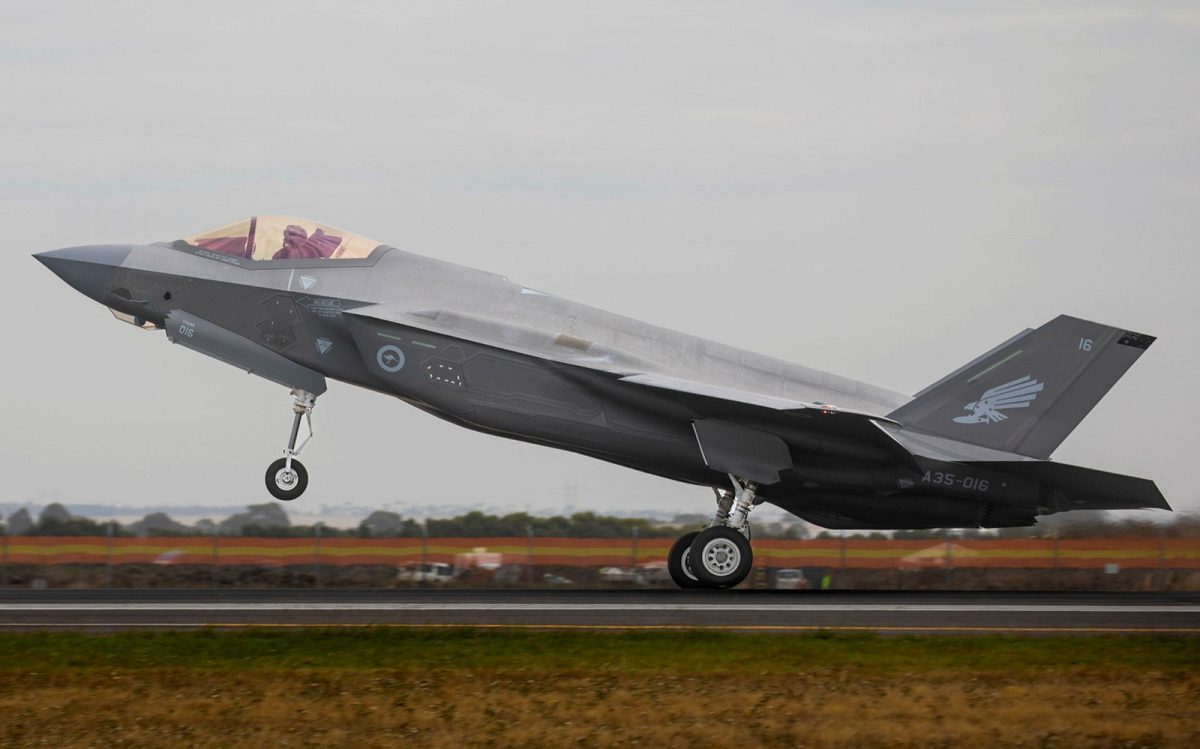
The F-35 requires copious amounts of threat data in order to remain stealthy and to successfully complete its mission. Photo: ADF.
But in the spirt of the old ‘rubbish in – rubbish out’ adage, an EW system is only as good as the data library from which it draws its information.
To this end, a dedicated data reprogramming laboratory is required to generate MDFS that will ensure the EW system’s data library is not only of sufficient fidelity for its advanced systems, but that it remains tactically relevant throughout the F-35’s planned 30-year service life.
It is this element which is arguably one of the most difficult and sensitive parts of the program, not only due to the security aspects, but also from a sovereign capability viewpoint.
The UK and Australia have been operating their F-35s for nearly a decade now, whereas Canada is yet to take delivery of its first aircraft, so the ‘A’ and ‘U’ elements of the ACURL have already got a head start on the collaborative MDFS development enterprise.
The RAAF’s contribution to ACURL previously operated as a detachment of the Air Warfare Centre. But with the RAAF closing in on a full operational capability (FOC) of its F-35s, both it and the UK’s Royal Air Force have now established dedicated squadrons to oversee their ACURL activities, and both services have resurrected their own No 80 Squadron.
RAAF Chief of Air Force Air Marshal Robert Chipman and RAF Chief of the Air Staff Air Chief Marshal Sir Rich Knighton formally awarded the dormant No 80 Squadron numberplates for each service to their respective teams within the ACURL on 15 April.
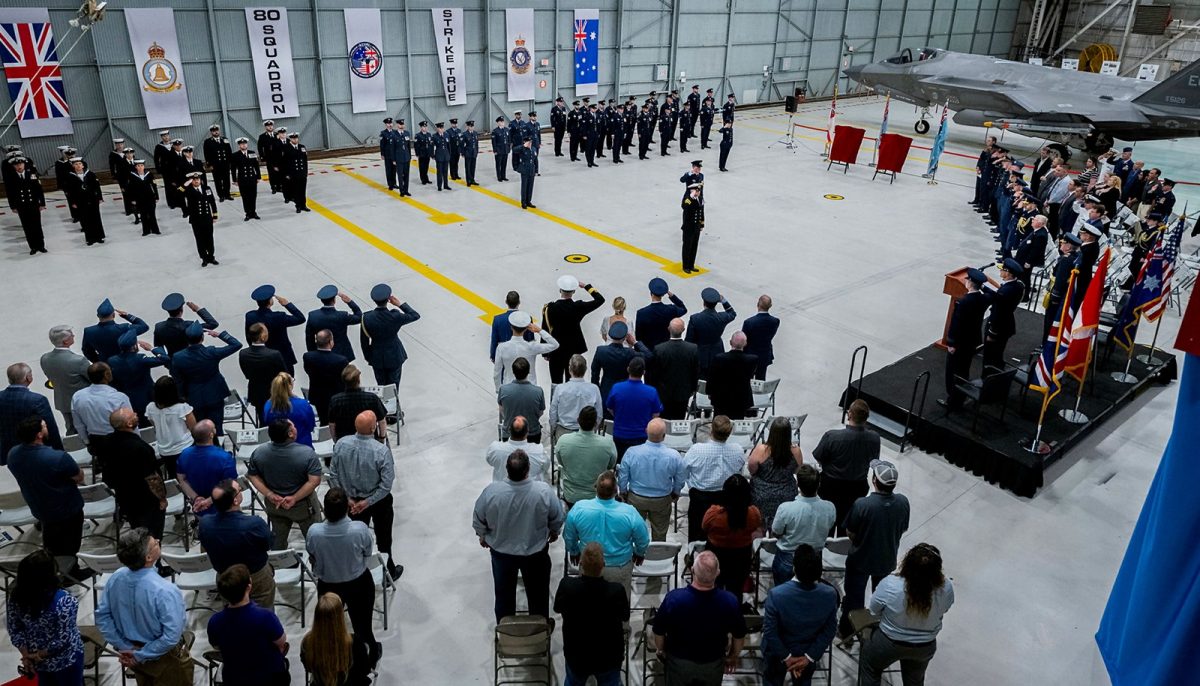
The ceremony for the reformation of the RAF’s and RAAF’s 80 Squadrons was held in a hangar at Eglin AFB in Florida. Photo: ADF via USAF.
“F-35 warfighting capability in Europe and the Indo- Pacific is dependent on how well the specialist personnel at 80 Squadron continue to ‘sharpen the spear’ together in their work here in Florida,” Air Chief Marshal Knighton said.
“Co-location of the whole F-35 reprogramming enterprise at Eglin AFB provides a unique opportunity to integrate with our closest F-35 partners to the fullest extent; it’s an opportunity that wouldn’t exist if we were at home alone.”
Air Marshal Chipman said Australia’s partnership with allied nations was of utmost importance. “Together, we must adapt to meet the challenges of the future, by leveraging opportunities for collaboration and cooperation.”
The RAAF’s 80 Squadron was originally formed in 1943 and fought in the Pacific theatre. It was equipped with Curtiss P-40 Warhawks and its operations included covering Allied amphibious landings. At the cessation of hostilities, the squadron returned to Australia and was disbanded in 1946.
The RAF’s 80 Squadron was formed in 1917 and operated over the Western Front and Egypt during World War I. It was reformed in 1937 in North Africa and in WWII served initially in the Eastern Mediterranean and Italy before returning to the UK in 1944 before D-Day.
Post-war the squadron moved to Hong Kong, before it moved to Germany in 1955, flying reconnaissance missions over Europe until it was disbanded in 1969.


